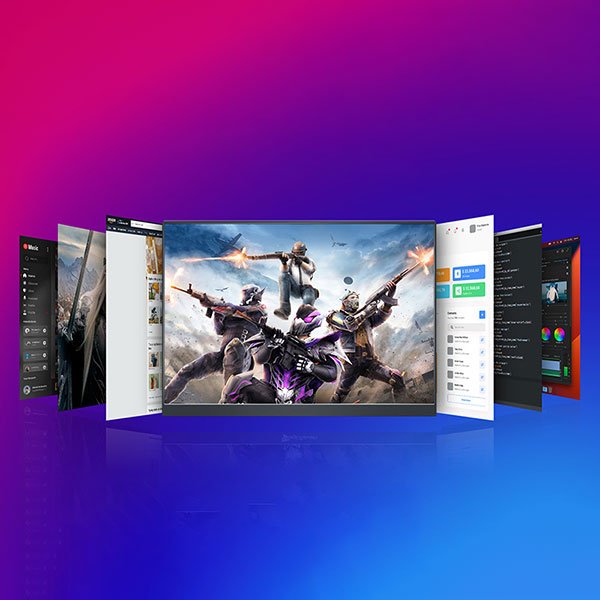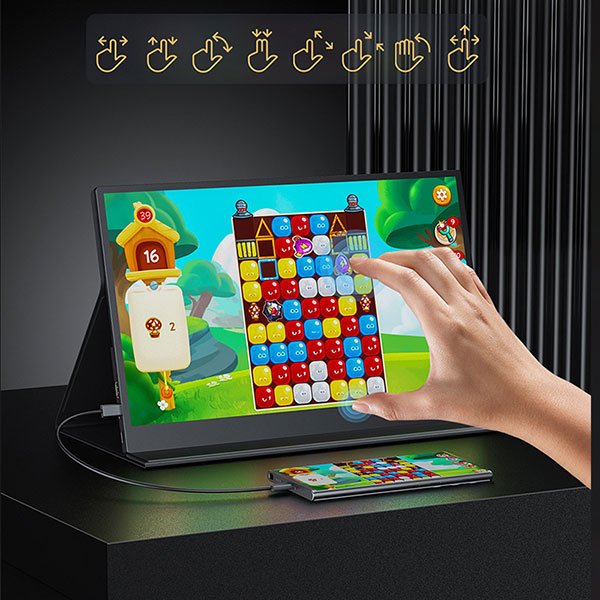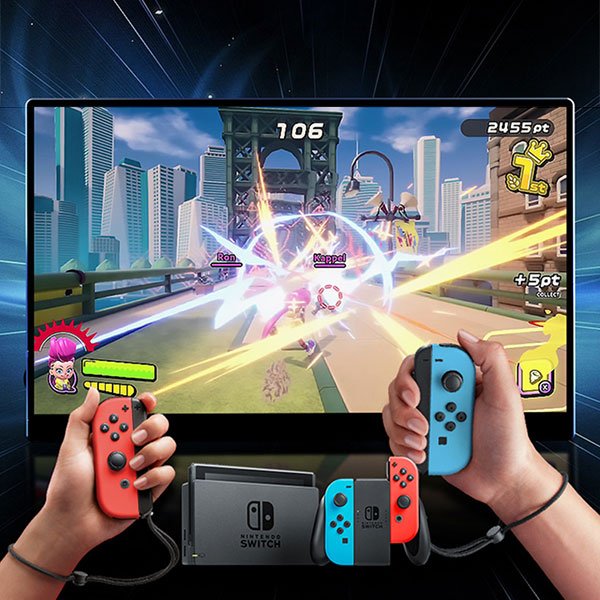up to 10% OFF!
How to Choose a Portable Monitor (06) – Screen Response Time
If you are looking for a portable monitor for gaming, video, or other fast-paced applications, you might want to pay attention to the screen response time. This is the time it takes for the pixels on the screen to change from one color to another, usually measured in milliseconds (ms). A low response time means less motion blur, ghosting, and smearing on the screen, which can improve your visual experience and performance.

But how low is low enough? And what are the trade-offs of a fast response time? Here are some things to consider when choosing a portable monitor based on its response time.
- The standard response time for most LCD monitors is under 10 ms, with some models reaching as low as 1 ms. However, the exact method of measuring response time varies among manufacturers, so you might not be able to compare different monitors directly based on this spec. Some use the black-to-white-to-black (BTW) method, while others use the gray-to-gray (GTG) method, which is more realistic but also more difficult to achieve.
- The response time also depends on the type of panel used in the monitor. There are three main types of LCD panels: twisted nematic (TN), in-plane switching (IPS), and vertical alignment (VA). TN panels have the fastest response times, usually around 1 to 2 ms, but they also have poor viewing angles and color accuracy. IPS panels have better viewing angles and color accuracy, but their response times are usually around 4 to 8 ms. VA panels have the best contrast ratio and black levels, but their response times are the slowest, usually around 10 to 20 ms.

- The response time is not the only factor that affects the motion performance of a monitor. You also need to consider the refresh rate, which is the number of times the screen updates per second, expressed in hertz (Hz). A higher refresh rate means smoother and more fluid motion, especially for fast-moving scenes. Most monitors have a refresh rate of 60 Hz, but some gaming monitors can go up to 120 Hz, 144 Hz, or even 240 Hz. However, to take advantage of a high refresh rate, you also need a compatible device and a fast enough connection.
- A fast response time can also have some drawbacks, such as overshooting and undershooting. This happens when the pixels change too quickly or too slowly, resulting in a halo or inverse ghosting effect around moving objects. To prevent this, some monitors have an overdrive or adaptive sync feature, which adjusts the response time according to the input signal. However, this can also introduce some input lag, which is the delay between your actions and the corresponding changes on the screen.
So, what is the best response time for a portable monitor? The answer depends on your personal preference and usage scenario. If you are mainly using the monitor for gaming, you might want a TN panel with a low response time and a high refresh rate. If you are using the monitor for video, photo editing, or other color-sensitive tasks, you might prefer an IPS panel with a higher response time but better color accuracy. If you are using the monitor for general purposes, you might opt for a VA panel with a balanced response time and contrast ratio.

